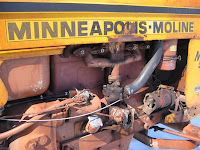 Okay, so I only received 8 votes ... as far as I can tell ... but, since four of them went to Julius Ruechel's book "Grass-Fed Cattle" that is the one I am going to tackle first. The sub-title is, "How to Produce and Market Natural Beef" so I totally expect to learn how to do that in the 300 odd pages of this book! Or at least come away with a little bit better understanding. I have read a few grass-fed cattle books now, so it will be interesting to see how this one fits into the mix. I have a feeling it will be closer to a "Quality Pasture" type of book compared to a Gene Logsdon or Joel Salatin style.
Okay, so I only received 8 votes ... as far as I can tell ... but, since four of them went to Julius Ruechel's book "Grass-Fed Cattle" that is the one I am going to tackle first. The sub-title is, "How to Produce and Market Natural Beef" so I totally expect to learn how to do that in the 300 odd pages of this book! Or at least come away with a little bit better understanding. I have read a few grass-fed cattle books now, so it will be interesting to see how this one fits into the mix. I have a feeling it will be closer to a "Quality Pasture" type of book compared to a Gene Logsdon or Joel Salatin style.One thing that I am continually learning, and being reminded of daily, is that I don't have as much time as I used to for recreational reading. Between work at the church, soccer, family, and trying to figure out all the stuff with the new land I don't have as much time for reading. So, when I do take the time read a book I want to make sure it will be a profitable read for me in the expansion of our farm. Here are some things I hope to get out of the book.
- I am interested in learning more about stockpiling winter forage and being ready for drought on a grazing operation.
- Marketing is something I am always hoping to learn more about. A lot of what is said in the different books is similar, but there are always some differences that stick out. I'm always looking to learn more on marketing.
- Finally, as I thumbed through this book I noticed a worksheet style goal setting and business plan section towards the end of the book. That is something I am really interested in checking out and I probably will have to hold myself back from skipping ahead (not that there is anything wrong with it).
As I flipped through the book I saw that there were many sections and chapters that are similar to the topics covered in other books I have read, so we will see if it is just repetition of the same old stuff or if there is something new. In any case I know that I always learn something. Of course I will report at the end of each chapter some of my thoughts. The discussion that comes out of those reports is better than reading the book!
Look for the book reports coming soon ... I'll have to remember my book light on those long soccer bus rides!





























